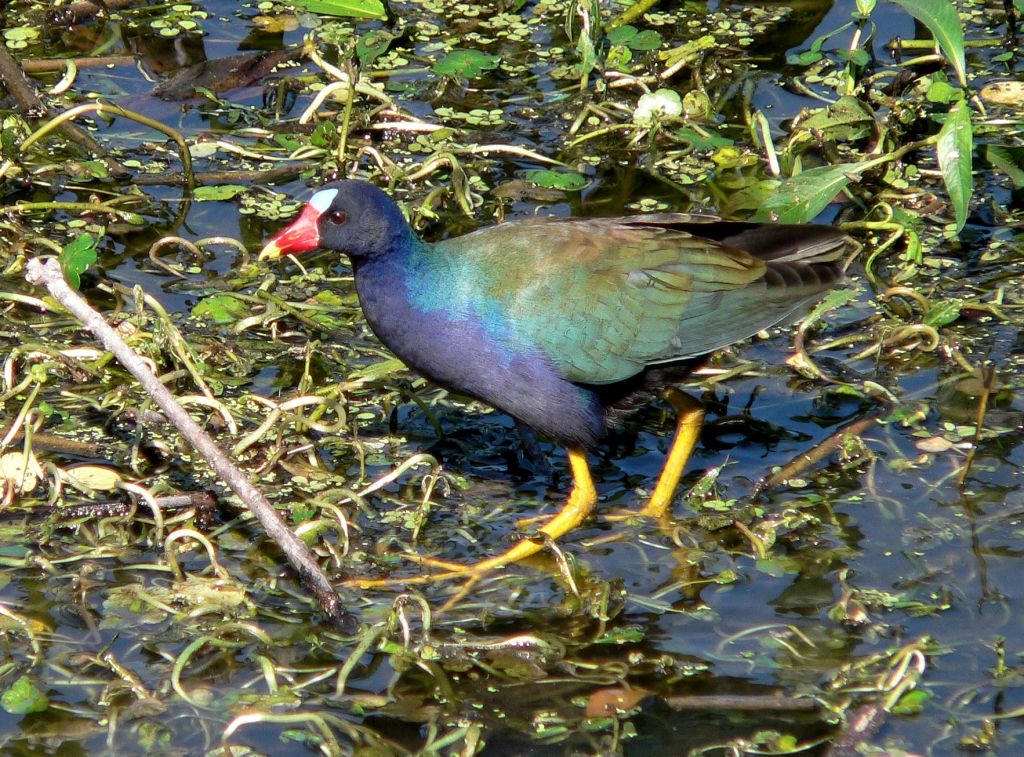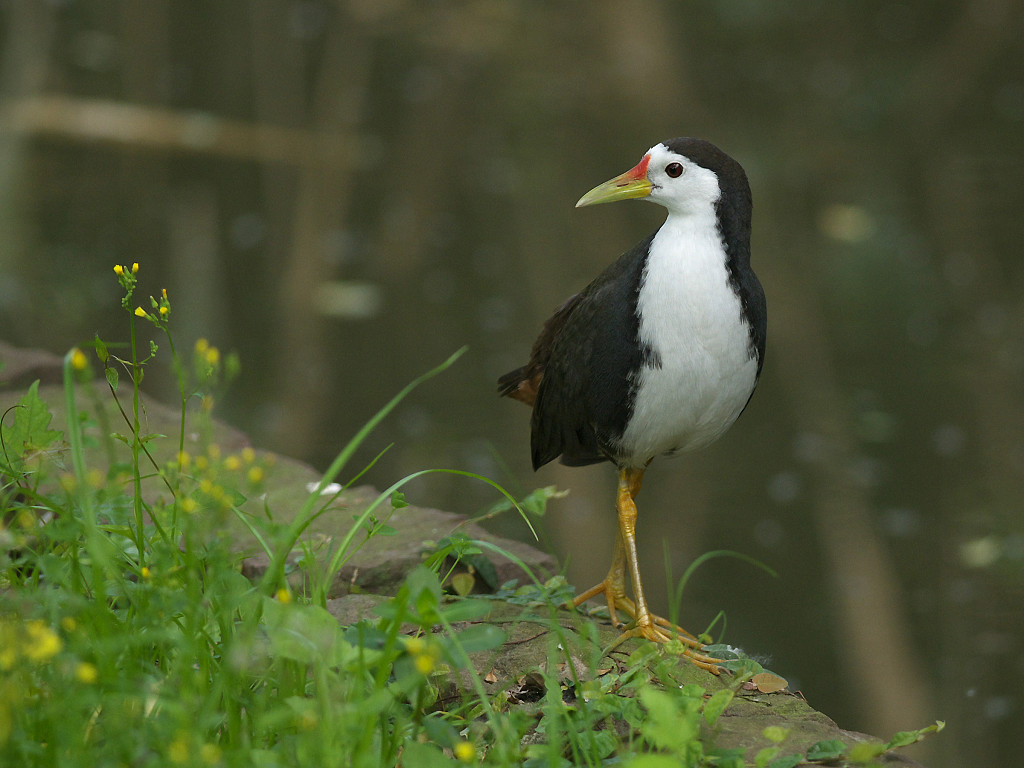
THE WATER HEN.
WHAT is this picture about? Let us look at it closely, and see if we can tell.
This bird looks very much like a duck, doesn't it, but it is not a duck; it is a water hen. You will see it has very long toes and curved claws, but its feet are not webbed. Its bill is bright red, tipped with yellow. The head is blackish gray, the back olive green, and the breast blueish gray, with a few white feathers at the base of the wings and at the tail; while its legs are yellowish green.
Down in the water are the hen's little chickens.
They are downy black, and do not have pretty colored feathers until they are older. They go swimming in the water almost as soon as they are hatched.
Until they get a little larger, they paddle close by the old hen's side among the pond lilies and rushes; for if they do not keep a sharp lookout, a large fish called a pike comes floating under the water, and seizing the little hens, carries them off for a meal.
These birds always choose for a building-spot some open place among the tall weeds and rushes near the edge of a pond or deep, quiet stream; and if they like the place, they will come back to their old home season after season. The nest is made of sticks, leaves, and dead grass.
There are usually from seven to ten eggs; and when the mother bird goes away from the nest, she scratches leaves and grass over it to hid her eggs from the crows and jays, or other birds that like to eat eggs. Sometimes the stream rises, and comes up as high as the nest. Then the birds go to work patiently putting sticks and twigs under the nest until it is out of the water. One bird goes off to find the sticks, and the other stays by and fixes their home.
These birds can run on the ground as easily as any hen, picking up worms, insects, and grain, though they like the water best. They live in England and in the warm States of America from Florida to Texas, in the summer coming north as far as Carolina. They also live in South America.
If you will get your geographies, you can see on the maps just where these places are.
These birds are not afraid of any loud noise, and will float on the water with a train of cars thundering along right beside them. But if they see a man with a gun or a dog coining, they are out of sight in an instant, so that it is very hard to catch them. When 'shot, the bird dives suddenly, and swims along under the water, till it comes to a good hiding-place among the weeds, and then it sticks out its nostrils, and waits until. the danger is over, so that if the hunter has not a good dog with him, he cannot get the bird. Sometimes it makes believe that it has been shot, and drops over among the rushes as if it were dead; then while the hunter is loading his gun, the bird floats off to some safe place out of sight.
Water hens have been brought up with other fowls in the barnyard, and were as tame as any, hens. They are, however, very mischievous; and -one man who had a good many with his other hens, had his garden nearly destroyed by them.
They ate up his peas, strawberries, currants, and gooseberries while they were green, besides entirely stripping his cabbages and greens of their leaves.
W. E. L.
